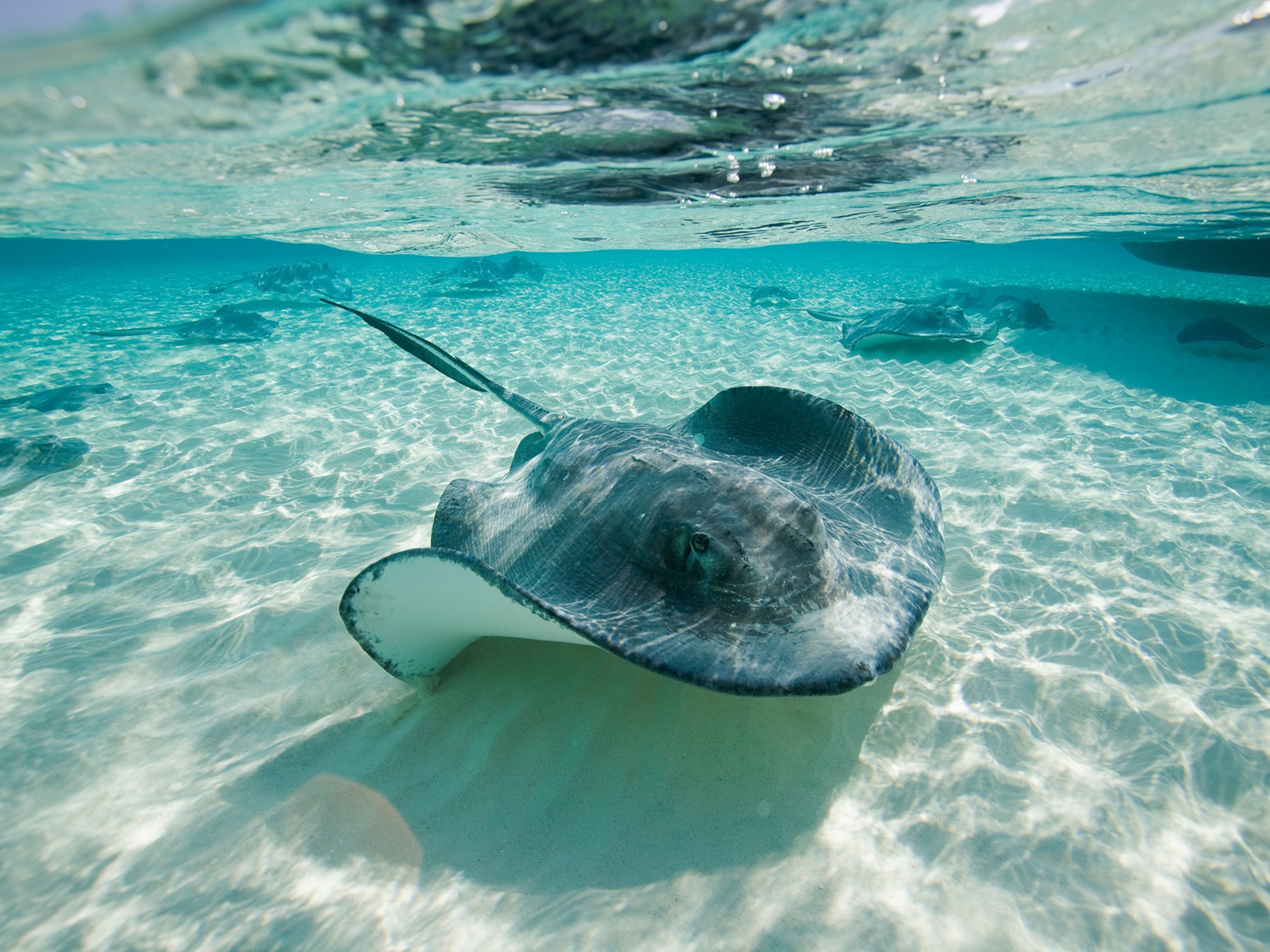
What's Behind a Surge in Stingray Attacks?
Lifeguards would have been surprised to treat more than 40 injuries in one day, so when they treated over 70, they were shocked.
Stingrays love warm water. One thing they hate? The sudden presence of human feet.
The combination recently left a record number of beachgoers at Huntington Beach, just south of Los Angeles, with stingray injuries—at least 73 people were treated last Friday.
Lt. Claude Panis from the beach's marine safety unit believes even more victims chose to self-treat injuries at home.
Stingrays can cause highly painful injuries, but in most cases, pain is the biggest symptom. In addition to the puncture wound caused by the stinger, the ray's toxins cause intense pain around the wound. Very rarely, victims can have an allergic reaction to the stinger, and only a handful of people die from them every few years.
To treat wounds, lifeguards soak feet (the most common place to be struck) in hot water, which breaks down enzymes in the toxin.
"I’ve never seen that many in a day," said Panis, who has worked at the beach for four decades. "I had never seen 45 in a day. To see 73 stingrays was so unusual."
Altogether, it was a dangerous weekend to be a tourist at the southern California beach. On Wednesday the beach team treated 38 injuries, then 45 on Thursday, and on Saturday another 38.
"We’ve had an increase in the last two years," says Panis. "The stingrays have exploded on our beach."
How Stingrays Strike
Panis describes a perfect storm of conditions that led to the high number of injuries seen last weekend.
With the upcoming New Year's holiday, more people visited the beach, and thanks to unseasonably warm weather there, more peopled headed into the water. An especially low tide also pulled people to venture farther into the ocean.
Just like people, stingrays also prefer warmer weather. During winter months, they typically venture away from the shore in search of warmer patches, but Friday's warm ocean water drew them to the shoreline.
For people brave enough to venture out into the water, lifeguards recommended a technique called the "stingray shuffle" that entails dragging one's feet along the sand to scare the fish away. Stingrays are skittish and only strike when surprised or stepped on.
"I think the stingray shuffle is pretty effective," says Panis. "But people have shuffled right into a stingray. Everyone from an experienced surfer to a first timer wading out to the beach [have been stung]. The stingrays don’t discriminate."
Changing Beaches
The 73 injuries reported last Friday set a record for the number of stingray injuries recorded in a single day at the beach, but it isn't the first time the problem has appeared.
In August of last year, California's Newport Beach saw 127 stingray injuries over a month's time, compared to only 20 recorded at the same time during the previous year. A month later, Huntington Beach reported 33 in a three-day period—uncharacteristically high for a fall month.
Speculation that stingray populations have been increasing were reported in 2014 and 2012.
Growing Populations?
For some time, lifeguards have been reporting more sightings of stingrays off the Southern California coast, but hard data on the animals' populations are scarce.
The International Union for the Conservation of Nature, which tracks the status of species, cites research from 2007 to conclude that southern California populations of round stingray (the most common species) are stable.
"Unfortunately, we don’t have any new information on them," said Chris Lowe, the director for the California State University Long Beach Shark Lab and a lead researcher on stingray populations in the region.
However, scientists do know that alterations to California's coastline and a historic drop in predators like sharks helped stingray populations grow over the past 50 years.
In the past 15 years or so, white sharks—one of the ray's most active predators—have been increasing, but stingray populations don't seem to have decreased.
And then there's the Pacific—it's warming waters to be exact. The eastern portion of the vast ocean saw record warming from 2014 to 2016, often referred to as a "blob" that had disastrous environmental consequences.
According to Nicholas Bond, a research meteorologist at the University of Washington, southern California is experiencing warmer than average coastal waters this year.
"From my perspective the recent warmth is not so much due to a marine heat wave such as the infamous "blob" of 2014-16, but rather a sign of the continued warming of the Earth's oceans," he says. "This warming in any particular place is occurring in fits and starts; when considering the globe as a whole, and the entire water column, the trend is steadily up, and accelerating."
How much this regular warming impacts stingrays remains to be seen.
"[I] can’t say for sure that it is climate change related, but these odd changes in patterns are starting to point in that direction," says Lowe.









